
Straight from the pages of the September 1895 issue of The Delineator…. Pattern number 7856 a nine-gored skirt with matching bias seam edges. Oh, to be able to purchase this original pattern of the Late Victorian era!
Here is the complete description of the pattern along with yardage requirements given in the magazine. I’ll also mention modern pattern suggestions to replicate.
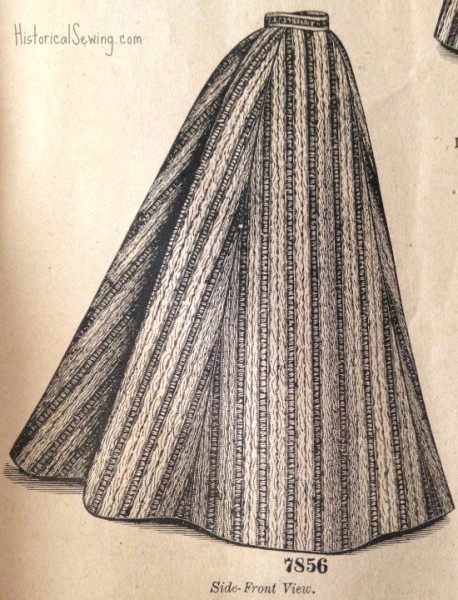
LADIES’ NINE-GORED SKIRT, WITH BIAS EDGES MATCHING AT THE SEAMS. (Desirable for Striped, Plaid or Figured Goods.)
(For Illustrations see Page 293).
No. 7856. – This skirt is pictured differently made up at figures Nos. 222P, 227P and 238P in this number of THE DELINEATOR. It is also shown at figure A39 on the Ladies’ Plate for Autumn, 1895 [missing from my copy of this magazine].
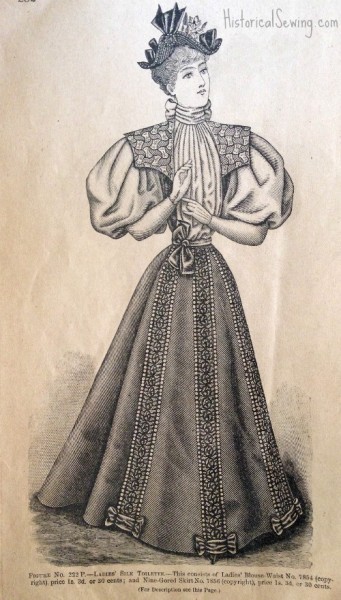
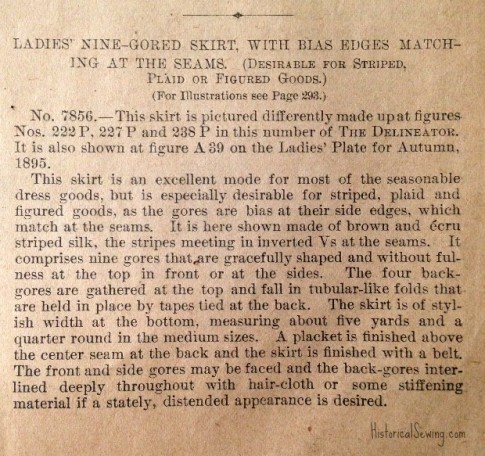
This skirt is an excellent mode for most of the seasonable dress goods, but is especially desirable for striped, plaid and figured goods, as the gores are bias at their side edges, which match at the seams. It is here shown made of brown and ecru striped silk, the stripes meeting in inverted Vs at the seams. It comprises nine gores that are gracefully shaped and without fullness at the top in front or at the sides. The four back-gores are gathered at the top and fall in tubular-like folds that are held in place by tapes tied at the back. The skirt is of stylish width at the bottom, measuring about five yards and a quarter [192”] round in the medium sizes. A placket is finished above the center seam at the back and the skirt is finished with a belt. The front and side gores may be faced and the back-gores interlined deeply throughout with hair-cloth or some stiffening material if a stately, distended appearance is desired.


The possibilities for artistic effects are unlimited in this mode, for its grace and dignity may be brought out handsomely in striped silk, stately brocade, crepe fabrics and dainty French goods that are novelties in stripes, figures and checks.
We have pattern No. 7856 in nine sizes for ladies from twenty to thirty-six inches, waist measure. To make the skirt for a lady of medium size, requires ten yards and five-eighths of goods twenty-two inches wide, or ten yards and a half thirty inches wide, or eight yards and three-fourths thirty-six inches wide, or five yards and seven-eighths forty-four inches wide, or five yards and a half fifty inches wide. Price of pattern, 1s. 3d. or 30 cents.
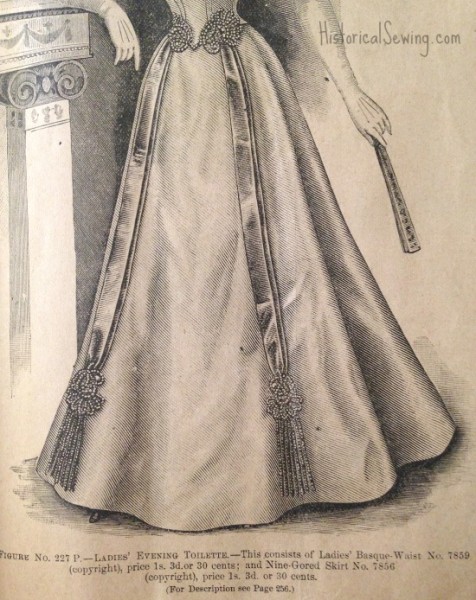
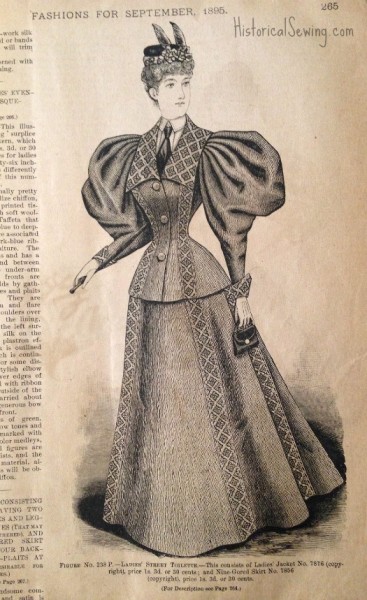
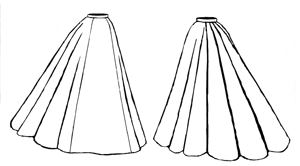
To replicate this skirt I’d suggest Truly Victorian TV296 – 1895 Ripple Skirt which is six yards at the hem and close to the above description.
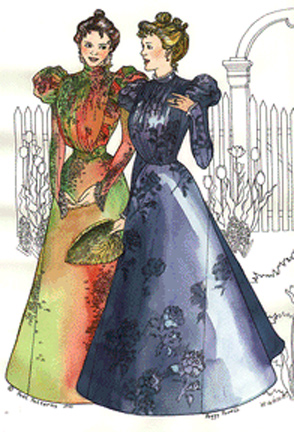
Or try the Past Patterns #208 Circular Skirt, although while it is not gored, the fullness at the hem is there. Keep in mind, with this you wouldn’t get those lovely inverted Vs at the seams.
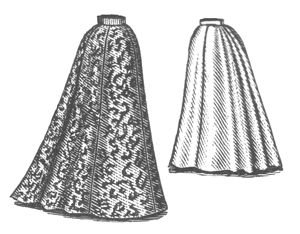
Another option would be the Truly Victorian TV291 – 1898 Walking Skirt that has 7 gores that could be widened at the hem for a fuller mid-1890s look.
For sewing help, review my tutorials on skirt plackets, “faced” skirts article on flatlining skirts, and “interlined deeply” article on hem facings.
I’d love to see your skirt if you attempt this original design!
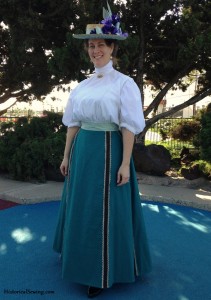


Dear Jennifer,
I found a great Original pattern from 1895 and you are not in need of time traveling.
Found at the University Duesseldorf.
9 gored skirt with a hem of 207 and a waist of 24.
Please inform me, if you need help with the metric measurements.
Greatings from Germany
Janine
Wonderful! Thank you.
Are you able to share pattern?
nessygough@hotmail.com
I am looking at making a skirt which will have bias edges meeting like this one, but I am concerned about stretching, both during sewing and wearing. Can you suggest any techniques for avoiding this? Thank you!
Many shaped & gored skirts of the 19th century have panels cut in this manner. It’s to help shift the flare and width to the back. The key is is to sew them as you see them in the sketches here: the straight edge of one panel sewn to the bias cut edge of the panel in front of it. The straight edge, cut on grain, is what supports the bias edge. Also, be sure to sew with the grain which is from the hem to the waist.
Okay, I’m confused…the description of this skirt says “with bias edges matching at the seams,” and in the picture with the striped fabric, the V-shape would seem to indicate that both edges are cut on the bias – otherwise it wouldn’t make a V shape, would it?
Sorry, yes, this particular skirt pattern that was released in 1895 had bias (or angled) cut side seams. Heavy, tightly woven goods won’t stretch on you as much as was intended with the pattern. (1890s skirts were heavily structured.) To support bias cuts of fashion fabrics I like to cut the underlining on the grain so in flatlining it supports the striped or off-grain cut fashion fabric. If your fabric is light and are concerned of stretching I’d recommend a narrow twill tape be sewn to the seam to hold. Layers of underlinings, and even a full lining, along with a deep hem facing will help keep the entire structure of the skirt in place.
Thank you!! That’s just what I needed to know. Love your website!